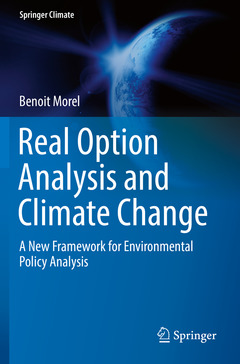Description
Real Option Analysis and Climate Change, 1st ed. 2020
A New Framework for Environmental Policy Analysis
Springer Climate Series
Language: English
Subjects for Real Option Analysis and Climate Change:
Publication date: 08-2020
Support: Print on demand
Publication date: 06-2019
160 p. · 15.5x23.5 cm · Hardback
Description
/li>Contents
/li>Biography
/li>Comment
/li>
This book sets out to reframe the theory of real options so that it can be used to support environmental investments for climate change adaptation and mitigation. Climate change policy often involves making decisions that concern extended time periods, and doing so under considerable uncertainty. By expanding and broadening the framework of real options, this book first introduces readers to new ways of quantifying investment decisions that can much more effectively address the shape and size of the uncertainty than traditional approaches using Net Present Value. In turn, the second part of the book applies this new theoretical framework to climate change policy by presenting a number of examples, and by providing a general perspective on investment decisions related to climate change and how to prioritize them.
Revisits real option theory and applies it to environmental and climate change policy
Presents detailed practical examples from different areas of climate change policy
Relevant for researchers and practitioners of climate change policy




